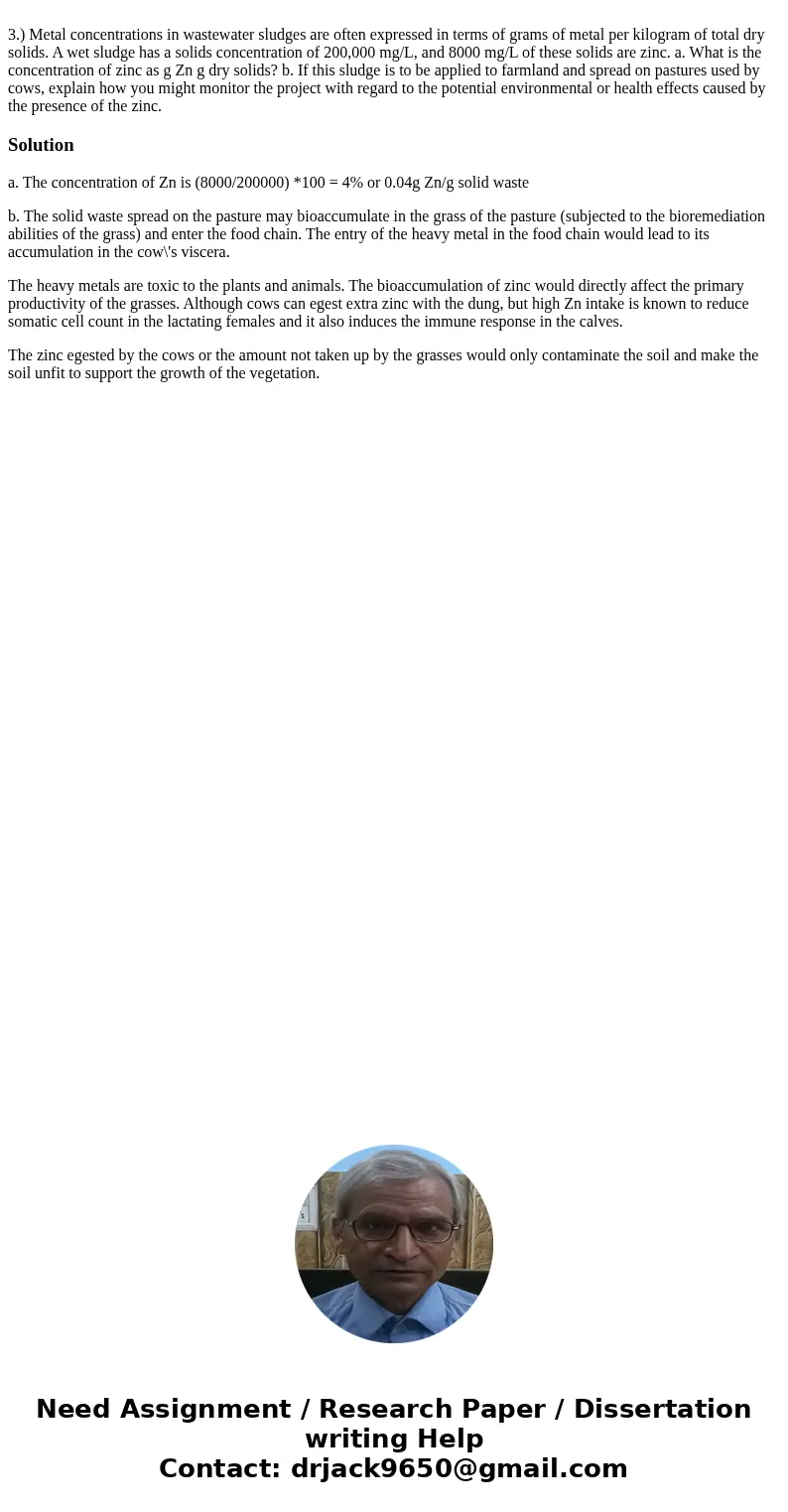3 Metal concentrations in wastewater sludges are often expre
Solution
a. The concentration of Zn is (8000/200000) *100 = 4% or 0.04g Zn/g solid waste
b. The solid waste spread on the pasture may bioaccumulate in the grass of the pasture (subjected to the bioremediation abilities of the grass) and enter the food chain. The entry of the heavy metal in the food chain would lead to its accumulation in the cow\'s viscera.
The heavy metals are toxic to the plants and animals. The bioaccumulation of zinc would directly affect the primary productivity of the grasses. Although cows can egest extra zinc with the dung, but high Zn intake is known to reduce somatic cell count in the lactating females and it also induces the immune response in the calves.
The zinc egested by the cows or the amount not taken up by the grasses would only contaminate the soil and make the soil unfit to support the growth of the vegetation.

 Homework Sourse
Homework Sourse